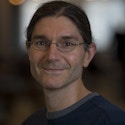Simons Investigators
- Email:
[email protected]
Simons Investigators are outstanding theoretical scientists who receive a stable base of research support from the foundation, enabling them to undertake the long-term study of fundamental questions.
The Investigator program has been discontinued.
Simons Investigators in Mathematics, Physics, Astrophysics and Computer Science
The intent of the Simons Investigators in Mathematics, Physics, Astrophysics and Computer Science programs is to support outstanding theoretical scientists in their most productive years, when they are establishing creative new research directions, providing leadership to the field and effectively mentoring junior scientists. A Simons Investigator is appointed for an initial period of five years. Renewal for an additional five years is contingent upon the evaluation of scientific impact of the Investigator.
Simons Investigators in Mathematical Modeling of Living Systems (MMLS)
This program aims to help the research careers of outstanding scientists working on mathematical and theoretical approaches to topics in the life sciences. A Simons Investigator in MMLS is appointed for five years.
Math+X Investigators
This program encourages novel collaborations between mathematics and other fields in science or engineering by providing funds to professors to establish programs at the interface between mathematics and other fields of science or engineering. A Math+X Investigator is appointed for an initial period of five years. Renewal for an additional five years is contingent upon the evaluation of scientific impact of the Investigator.
- Email:
[email protected]
- Email:
[email protected]
2023
Emanuele Berti, Ph.D.
Johns Hopkins University
Emanuele Berti is a theorist whose research interests include black holes, neutron stars, gravitational-wave astronomy and astrophysical tests of general relativity. He has worked on various topics in gravitational-wave science, including black hole quasinormal modes, higher multipole radiation and spin precession in binary systems, astrophysical scenarios for the formation and evolution of compact binaries, and modified theories of gravity. Berti is contributing to the development of the science case for the space-based detector LISA and for next-generation ground-based detectors.
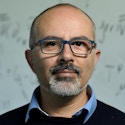
Aram Harrow, Ph.D.
Massachusetts Institute of Technology
Aram Harrow studies quantum computing and information. He works to understand the capabilities of the quantum computers and quantum communication devices we will build in the future, and in the process, he creates connections to other areas of theoretical physics, mathematics and computer science. He has developed quantum algorithms for solving large systems of linear equations and hybrid classical-quantum algorithms for machine learning. Harrow has also contributed to the intersection of quantum information and many-body physics, with work on thermalization, random quantum dynamics and the “monogamy” property of quantum entanglement.
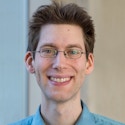
Daniel Jafferis, Ph.D.
Harvard University
The research of Daniel Jafferis spans many areas of quantum gravity, string theory and quantum field theory. Current directions include understanding bulk observables in holography and extracting lessons for de Sitter spacetime, precisely formulating the statistical ensembles encoding the pseudo-random aspect of chaotic conformal field theories, understanding entanglement entropy in string theory, finding physically realizable quantum systems that exhibit features of emergent gravity, and formulating and resolving the overcounting problem of semi-classical black hole microstates. The overarching goal is to find the full formulation of the laws of physics, in particular the fundamental framework that describes quantum gravity in an expanding universe.
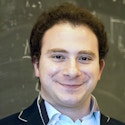
David Kaplan, Ph.D.
Johns Hopkins University
David Kaplan is a theoretical physicist proposing extensions to the standard models of particle physics and cosmology and finding new ways to test them experimentally. He has discovered models of a naturally small cosmological constant and Higgs mass, classical solutions for firewalls in general relativity, and causal modifications of quantum mechanics. He has also found testable models of dark matter, dark energy and dark radiation. He has proposed algorithms to discover both heavy and long-lived particles at colliders, as well as techniques for discovering dark matter and new elementary forces using new technologies in novel ways.
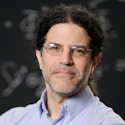
Norman Yao, Ph.D.
Harvard University
Norman Yao’s research combines ideas from atomic physics, condensed matter and quantum information, with a focus on proposing laboratory realizations of novel strongly-correlated phenomena. He is known for his work on non-equilibrium phases of matter, ranging from time crystals to Floquet topological phases. Yao’s recent work has contributed to our understanding of ergodicity in many-particle classical and quantum systems, as well as strategies to avoid this fate. With collaborators, he introduced new ways to characterize topological phases, many-body quantum teleportation and entanglement dynamics in a wide array of quantum simulation platforms.
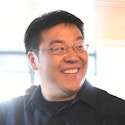
2022
Ehud Altman, Ph.D.
University of California, Berkeley
Ehud Altman studies quantum many-body phenomena in condensed matter and quantum information systems. He is known for introducing dynamical renormalization group methods to describe many-body localization and for establishing the nature of large-scale fluctuations in exciton-polariton condensates. Altman’s recent work has contributed to elucidating the role of quantum information, entanglement and chaos in the dynamics of many-body systems. With collaborators, he introduced the notion of Krylov complexity as a holographic-like principle for quantum operator growth in generic systems and helped to understand information phase transitions in quantum circuits using tools from field theory and statistical mechanics.

Michael Levin, Ph.D.
University of Chicago
Michael Levin’s research combines ideas from condensed matter physics, quantum information and mathematics with a focus on the theory of topological phases of matter. In one line of research, he has constructed exactly solvable lattice models that realize a general class of two-dimensional strongly interacting topological phases. These lattice models have become a useful theoretical tool for studying anyons. He has also introduced a way to probe topological phases using entanglement entropy, which has given rise to new numerical methods. Recently, Levin has made contributions to the theory of the bulk-boundary correspondence for topological matter, both in equilibrium and in periodically driven systems.
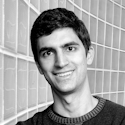
Mariangela Lisanti, Ph.D.
Princeton University
Mariangela Lisanti is a theoretical astroparticle physicist studying the nature of dark matter. Her research is interdisciplinary and often involves application of novel data science techniques or collaborations with experimentalists and observers. Lisanti helped to pioneer the use of simplified models in Large Hadron Collider searches, proposed new directions for dark matter experiments and developed original analysis methods for studying dark matter annihilation in gamma rays. Most recently, Lisanti has been harnessing data from astrophysical surveys to probe the fundamental nature of dark matter and map its distribution in the Milky Way.
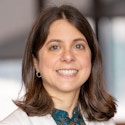
Douglas Stanford, Ph.D.
Stanford University
Douglas Stanford works on quantum gravity and its connection to quantum mechanics, mainly in the context of simple toy models of black holes. He and his collaborators showed that black holes exhibit the butterfly effect and used this as a starting point to explore chaos in quantum many-body systems. Stanford’s recent work has focused on aspects of black holes that appear in tension with the rules of ordinary quantum mechanics and, in particular, on the search for spacetime effects that can resolve the tension.
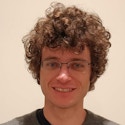
Jesse Thaler, Ph.D.
Massachusetts Institute of Technology
Jesse Thaler is a theoretical particle physicist who fuses techniques from quantum field theory and machine learning to address questions in fundamental physics. His current research focuses on maximizing the discovery potential of the Large Hadron Collider through new theoretical frameworks and novel data analysis techniques. Thaler is an expert in jets, which are collimated sprays of particles copiously produced at colliders, and he studies the substructure of jets to enhance the search for new phenomena and illuminate the dynamics of gauge theories.

2021
Xie Chen, Ph.D.
California Institute of Technology
Xie Chen studies exotic topological phenomena that can emerge in strongly interacting quantum many-body systems. Her work uses ideas and tools in quantum information to explore topological states of matter and study the relationships between them. She discovered and systematically constructed symmetry-protected topological phases in strongly interacting systems in two and higher dimensions. She proposed methods to classify and detect anomalies in symmetry-enriched topological phases. Recently, Chen’s work on fracton phases generalized the notion of phase and universality to properly capture the unusual “beyond topology” phenomena discovered in certain quantum error-correction codes.
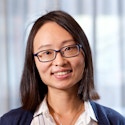
Shanhui Fan, Ph.D.
Stanford University
Shanhui Fan works broadly on photonics theory. Fan has made fundamental contributions in temporal coupled mode theory, non-reciprocity as induced by dynamic modulation, photonic gauge potentials, waveguide quantum electrodynamics, solar cell light trapping theory and daytime radiative cooling. Recently, he has been working on concepts of synthetic dimensions as a way to explore Hermitian and non-Hermitian topological physics in photonics.
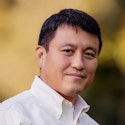
Peter Graham, Ph.D.
Stanford University
Peter Graham is interested in the fundamental laws of nature. Motivated by long-standing mysteries in particle physics and cosmology such as the weakness of gravity and the nature of dark matter, he proposed several new theories for these open questions. Additionally, he helped pioneer the use of ultrahigh-precision technologies for experimentally probing these questions. With experimental colleagues, he proposed novel approaches for detecting dark matter, new forces and gravitational waves. This gave rise to experiments using techniques from atomic physics, nuclear magnetic resonance and quantum information which are poised to shed new light on our universe.

Surjeet Rajendran, Ph.D.
Johns Hopkins University
Surjeet Rajendran has invented new experimental methods to detect gravitational waves, dark matter and dark energy. These methods are being implemented by many laboratories around the world. He has also developed theoretical tools to solve outstanding problems of particle physics such as the hierarchy and vacuum energy problems via cosmological evolution. His recent theoretical interests have been in identifying novel gravitational phenomena within general relativity, permitting new experimentally testable approaches to resolving cosmological singularities and solutions to the black hole information problem.
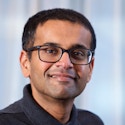
2020
Aashish Clerk, Ph.D.
University of Chicago
Aashish Clerk is a theoretical physicist working at the intersection of condensed matter, quantum optics and quantum information theory. His research focuses on driven-dissipative quantum phenomena and is motivated both by fundamental questions as well as potential applications in quantum technologies. Clerk is best known for his works on quantum optomechanical systems, on quantum amplification and measurement, and on dissipation engineering to realize unidirectional interactions. Clerk’s current work spans topics ranging from quantum transduction and quantum control to the study of new kinds of driven-dissipative bosonic topological phases and non-Hermitian quantum phenomena.

Claudia de Rham, Ph.D.
Imperial College London
Claudia de Rham works at the interface between gravity, particle physics and cosmology. She develops and tests new models to tackle fundamental questions of physics, such as the origin and evolution of the Universe, its accelerated expansion and the nature of gravity. She is known for uncovering the first theoretical framework where the graviton could carry a mass with far-reaching implications for cosmology and gravity. Recently, de Rham has focused on developing consistent effective field theory descriptions of our Universe that may enjoy a standard high-energy completion and on determining new classes of observational signatures.
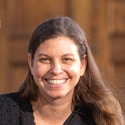
Mohammad Hafezi, Ph.D.
University of Maryland, College Park
Mohammad Hafezi is known for his contributions in a number of works to synthesize and characterize quantum many-body and topological physics beyond electronic systems. Examples include cold atoms, superconducting qubits and photons, where his works on the last one have helped found the field of topological photonics. Some of his current interests include efficient characterization and probing of many-body properties in quantum simulators. His research group is interested in exploring the application of quantum optics to create, probe and manipulate correlated electron systems.
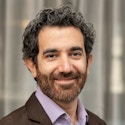
Leonardo Rastelli, Ph.D.
Stony Brook University
Leonardo Rastelli works on a broad range of problems in quantum field theory and string theory. He is known for his contributions to the AdS/CFT correspondence, string field theory, supersymmetric field theories and the conformal bootstrap. He is interested in developing a deeper framework for quantum field theory and quantum gravity, based on symmetry and general consistency principles, in the spirit of the bootstrap.
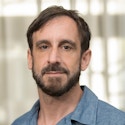
Kathryn Zurek, Ph.D.
California Institute of Technology
Kathryn Zurek is a particle theorist who specializes in theories of dark matter and new ideas for how one might detect it, either in terrestrial laboratories or through astrophysical observation. She is known for her proposal of Hidden Valley theories, which highlighted new experimental signatures at the Large Hadron Collider and opened the new paradigm of hidden-sector dark matter. Zurek also proposed the theory of asymmetric dark matter, which motivates a new class of experiments searching for light dark matter. Recently, she has explored a new direction in experimental signatures of quantum gravity.
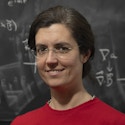
2019
Rouven Essig, Ph.D.
Stony Brook University
Rouven Essig is a theoretical particle physicists whose research focuses on the search for dark matter and other new particles beyond the standard model. He has helped pioneer several novel direct-detection concepts to probe dark matter below the proton mass and has been a leader in establishing this as a new research direction, attracting significant theoretical and experimental efforts. He has also been a leader in conceiving of fixed-target experiments to search for new forces, helping to spawn several new efforts. Although a theorist, he is co-leading or participating in several experiments searching for dark matter and new forces.

Sean Hartnoll, Ph.D.
Stanford University
Sean Hartnoll’s recent work has aimed to understand the flow of charge and heat in strongly quantum many-body systems without well-defined ‘quasiparticle’ excitations. His research has mobilized fundamental principles of statistical quantum mechanics to constrain this flow, and he has also studied solvable models that can reveal organizing principles behind non-quasiparticle physics. He is known for results on holographic models that translate the dissipative dynamics of black hole event horizons into phenomena of interest in condensed matter systems and has co-authored a book on the resulting holographic quantum matter.

Gil Refael, Ph.D.
California Institute of Technology
Gil Refael is best known for his works on realizing Majorana fermions in solid state systems and on quantum dynamics and control. Refael’s group has introduced the concepts of Floquet topological insulators and topological polaritons, and additionally worked on disordered magnets, superconductors and superfluids. Currently, he focuses on implementing concepts from topological physics to quantum control, as well as the microscopic origins of many-body localization.
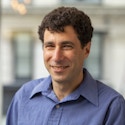
Neal Weiner, Ph.D.
New York University
Neal Weiner works on physics beyond the standard model, with an emphasis on understanding dark matter. He was active in developing the cosmology and signals of dark matter with interactions and contributed many ideas that helped shape our current thinking on theories of dark matter. Of late, he has focused on understanding the range of dark structures that may populate the Milky Way and how to detect them with gravitational lensing.

Cenke Xu, Ph.D.
University of California, Santa Barbara
Cenke Xu’s research has contributed to several different topics in theoretical condensed matter physics, such as quantum spin liquid states, interacting topological insulators and more generally symmetry protected topological phases, duality of unconventional 2+1 dimensional quantum critical points, and new understanding of non-Fermi liquid phenomena constructed based on the Sachdev-Ye-Kitaev model and related models. Most recently Xu’s group is also interested in understanding the strongly correlated phenomena observed in graphene-based systems with Moiré superlattice.
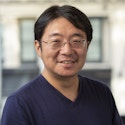
2018
Liang Fu, Ph.D.
Massachusetts Institute of Technology
Liang Fu contributed to the prediction of three-dimensional topological insulators and their material realizations. Since then, he has extensively developed topological band theory for crystalline insulators, semimetals and superconductors. He and his collaborators introduced a leading platform for creating Majorana quasiparticles and proposed realistic schemes for Majorana-based quantum computing. He also helped develop the concept of fracton topological order. Some of Fu’s recent interests include non-Hermitian quantum mechanics, topological properties of quantum particles and dynamics, nonlinear transport and optical properties in solids, and potential applications of topological quantum materials.
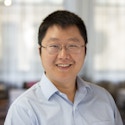
Kenneth Intriligator, Ph.D.
University of California, San Diego
Kenneth Intriligator’s research goal is to contribute to a deeper understanding of quantum field theory, which is the underlying framework of nature. He explores the varied phenomena and phases of quantum fields by developing symmetry-based methods to find new exact results, interconnections and dualities among theories.

Xiao-Liang Qi, Ph.D.
Stanford University
Xiao-Liang Qi’s recent work focuses on the role of quantum entanglement in quantum many-body physics and quantum gravity. He helped relate holographic duality with tensor network states, a geometrical representation of quantum many-body states. He has also worked on topological states of matter. His work pointed out the relation between topological insulators in three spatial dimensions and axion electrodynamics.
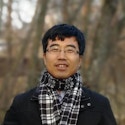
Shinsei Ryu, Ph.D.
Princeton University
Shinsei Ryu’s research highlights coherence, entanglement and topology in condensed matter — unique features of quantum systems which can give rise to phenomena with no classical counterparts. He has worked on the classification of topological phases of matter with symmetries and the characterization of strongly interacting many-body systems by quantum entanglement using the idea of holographic duality.
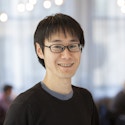
David Tong, Ph.D.
University of Cambridge
David Tong works on quantum field theory. A recurrent theme is the interplay between dualities, solitons and string theory. He is known for his contributions to inflation, supersymmetric gauge theories, holography and condensed matter. He is also known for his lecture notes on various topics in theoretical physics.

2017
Nigel Cooper, Ph.D.
University of Cambridge
Nigel Cooper has shown how to design optical lattices for cold atoms that provide controllable laboratories for exploring the physics of interacting particles in the presence of gauge fields. He is also known for foundational works on the topological Kondo effect and on quantum oscillations in topological insulators.

Steven Gubser, Ph.D.
Princeton University
Steven Gubser is known for foundational work on the gauge-string duality and its applications to heavy-ion and condensed matter physics, including a gravitational dual of superconductivity and studies of bulk flows of quark-gluon plasmas. He is also noted for work on semi-classical strings in anti-de Sitter space.
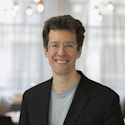
Shamit Kachru, Ph.D.
Stanford University
Shamit Kachru has done foundational work on string duality and string compactification. His recent work explores deep mathematics connecting automorphic forms, black holes, and string vacua, and develops quantum field theories describing ‘non-Fermi liquids’ and other novel phases in condensed matter physics.
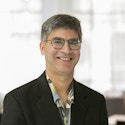
Anders Sandvik, Ph.D.
Boston University
Anders Sandvik is widely recognized for his development of stochastic series expansion methods for quantum problems and for his creative applications of these and related methods to topics including deconfined quantum criticality and optimization problems.

Eva Silverstein, Ph.D.
Stanford University
Eva Silverstein’s research connects the mathematical structure of string theory to predictions for cosmological observables, with implications for dualities, space-time singularities and black hole physics. Her work on axion monodromy provided a theoretically consistent model of large-field inflation.
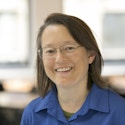
2016
Mina Aganagic, Ph.D.
University of California, Berkeley
Mina Aganagic applies insights from quantum physics to mathematical problems in geometry and topology. She made deep and influential conjectures in enumerative geometry, knot theory and mirror symmetry using predictions from string theory and from M-theory.
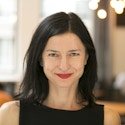
Andrea Alù, Ph.D.
University of Texas at Austin
Andrea Alù’s work on the manipulation of light in artificial materials and metamaterials has shown how clever designs may surpass what had previously been thought to be limitations on wave propagation in materials. He has developed new concepts for cloaking, one-way propagation of waves in materials, dramatic enhancement of nonlinearities in nanostructures and ultrathin optical devices based on metasurfaces and twisted metamaterials.
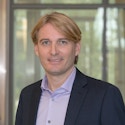
Andrei Beloborodov, Ph.D.
Columbia University
Andrei Beloborodov applies first-principles physics to astrophysical systems, and his work provides crucial new insights on how exotic astronomical objects work. He has done important research on compact objects like neutron stars and black holes and is particularly well-known for his studies of gamma-ray bursts, magnetars and pulsars.
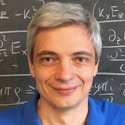
B. Andrei Bernevig, Ph.D.
Princeton University
Andrei Bernevig is a leader in the lively field of topological electronic states in solids. His initial proposal of the quantum spin Hall effect in HgTe quantum wells was soon followed by dramatic experimental confirmation. He has developed a theoretical framework for topological insulators and written a highly regarded book on the subject. His work on topological superconductivity in metal chains on superconducting surfaces, as well as his prediction of two types of Weyl semimetal states in transition metal monophosphides and WTe2, has stimulated considerable theoretical and experimental activity.

Garnet K.-L. Chan, Ph.D.
California Institute of Technology
Garnet Chan’s research lies at the interface of theoretical chemistry, condensed matter physics and quantum information theory, and is concerned with the phenomena and simulation methods associated with quantum many-particle systems. Some current problems of interest include metalloenzymes and biological catalysts, transition metal oxides and superconductivity, and conjugated organic systems and light harvesting. He has contributed to a wide range of quantum simulation methods, including density matrix renormalization and tensor network algorithms, quantum embedding theories and local correlation approximations.
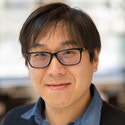
Daniel Eisenstein, Ph.D.
Harvard University
Daniel Eisenstein is a leading figure in modern cosmology. He is known for utilization of the baryon acoustic oscillations (BAO) standard ruler for measuring the geometry of the universe, which underpins several large upcoming ground and space missions. Eisenstein blends theory, computation and data analysis seamlessly to push the boundaries of current-day research in cosmology.
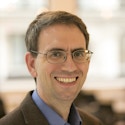
Anton Kapustin, Ph.D.
California Institute of Technology
Anton Kapustin’s work lies at the interface of physics and mathematics. He applied ideas from gauge theory to the study of the geometric Langlands program in mathematics and has applied sophisticated mathematics to the classification of exotic quantum states of matter.
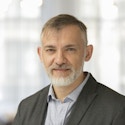
2015
Jonathan Feng, Ph.D.
University of California, Irvine
Jonathan Feng is recognized as one of the leaders in the theoretical study of dark matter, known for his work in constructing theoretical models, deducing observational consequences, and motivating and interpreting experimental searches for dark matter.
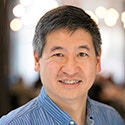
Alexei Kitaev, Ph.D.
California Institute of Technology
Alexei Kitaev’s work on topologically protected states of matter helped found the field of topological quantum computing; his prediction that topological superconductors may sustain Majorana fermions has initiated a major experimental activity. His most recent work concerns a simple quantum model that exhibits emergent gravity. Another topic of Alexei’s research is the mathematical description of quantum phases of matter.
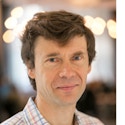
Andrea Liu, Ph.D.
University of Pennsylvania
Andrea Liu is making foundational contributions to the field of mechanics, in particular to the behavior of disordered packings of particles ranging in size from atoms or molecules (glass) to sand grains. With Nagel, she introduced the concept of jamming, explaining how random assemblies of closely packed objects become rigid. Building on this work and her subsequent analysis of the jamming transition, Liu has provided new insights into the elastic and flow properties of highly defected solids, identifying the topological defects whose motion allows flow and the soft modes associated with them.
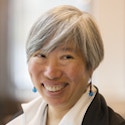
Mark Van Raamsdonk, Ph.D.
University of British Columbia
Mark Van Raamsdonk uses the holographic insights from the gauge-gravity duality to obtain new results in the theory of quantum gravity. He is particularly known for his recent results relating the geometrical structure of spacetime to entanglement structure of the holographically dual boundary quantum field theory.
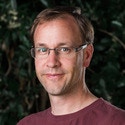
Ashvin Vishwanath, Ph.D.
Harvard University
Ashvin Viswanath is a leading quantum condensed matter physicist, known for his work on quantum phase transitions beyond the Landau–Wilson–Fisher paradigm, his recent theoretical prediction of Weyl semimetals and his generalizations of the topological insulator concept beyond the single-particle approximation.
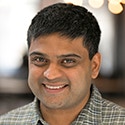
Anastasia Volovich, Ph.D.
Brown University
Anastasia Volovich’s work on gauge and gravity theories has introduced a new perspective on Feynman diagram calculations along with powerful and extremely efficient methods for their evaluation. Her ongoing work is uncovering deep mathematical structures within the gauge theories of particle physics.
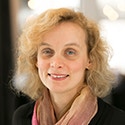
Matthieu Wyart, Ph.D.
New York University
Matthieu Wyart’s work has created a new scientific understanding of the physics of disordered and glassy systems. His study of soft modes controlled by random geometry in systems of closely-packed particles is recognized as a major advance, and his introduction of the idea of marginal stability unifies a wide range of phenomena, providing new insights into the statics and dynamics of glassy systems. Wyart resigned his Investigatorship in 2015 to move to a position at EPFL, Lausanne.

2014
Patrick Hayden, Ph.D.
Stanford University
Patrick Hayden’s work on the requirements for secure communication through quantum channels transformed the field of quantum information, establishing a general structure and a set of powerful results that subsumed most of the previous work in the field as special cases. More recently, he has used quantum information theory concepts to obtain new results related to the quantum physics of black holes.
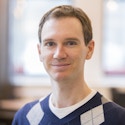
Marc Kamionkowski, Ph.D.
Johns Hopkins University
Marc Kamionkowski is one of the leading theorists working at the intersection of particle physics, cosmology and astrophysics. His early work helped found the field of precision cosmology, showing how observations of the angular structure of the cosmic microwave background revealed information about fundamental-physics effects in the early Universe. He has also done work that has been crucial to our understanding of the physics of dark matter. His review articles and talks have helped define this new and growing field. Kamionkowski’s recent work centers on the development of new methods for the use of astrophysical measurements to probe properties of fundamental physical interest.
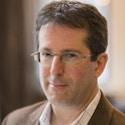
Leo Radzihovsky, Ph.D.
University of Colorado Boulder
Leo Radzihovsky is a condensed matter physicist whose work bridges the divide between the classical and quantum aspects of the subject, using mathematical tools and insights developed in one field to make seminal contributions in the other. His focus is on systems where fluctuations and heterogeneity play qualitative roles. He is known for his work on bent-core and other exotic liquid crystals; on fluctuating membranes and driven elastic media in the presence of quenched disorder, including the prediction of the transverse smectic phase; and on degenerate atomic gasses, where his rigorous work on the BCS-BEC crossover, particularly in systems with narrow Feshbach resonances, with and without “spin” imbalance, uncovered a host of new phenomena including topological phase transitions.
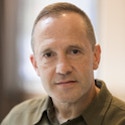
Rachel Somerville, Ph.D.
Rutgers, The State University of New Jersey
Rachel Somerville is a theoretical astrophysicist known for her contributions to the development of `semianalytic modeling’ methods that combine computational and pencil-and-paper theory, and her use of these methods, to further our understanding of the physical mechanisms of the formation, structural evolution and nuclear activity of galaxies. Her work has enabled, for example, the development of a comprehensive picture of the way in which the growth of supermassive black holes, and the energy they release during their formation, is linked with the structural properties of galaxies as well as their star formation activity. Somerville resigned her Investigatorship in 2018 to take a position at the Flatiron Institute.
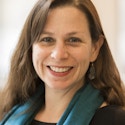
Anatoly Spitkovsky, Ph.D.
Princeton University
Anatoly Spitkovsky’s large-scale computer simulations of astrophysical plasmas have been instrumental in bringing a new level of quantitative precision to the field. His work on particle acceleration in astrophysical shocks is changing the way we understand high-energy astrophysics, and he is also known for his work on pulsar magnetospheres.
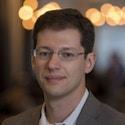
Iain Stewart, Ph.D.
Massachusetts Institute of Technology
Iain Stewart works in the physics of elementary particles, investigating fundamental questions in quantum chromodynamics, i.e., the interactions of quarks and gluons via the strong force. He is particularly known for his role in inventing soft collinear effective field theory, a theoretical tool for understanding the particle jets produced by high energy collisions in accelerators such as the LHC. He has established factorization theorems that enable the clear interpretation and physical understanding of the collision products. Methods he has developed have been used in the search for the Higgs boson, to gain new insights into effects of CP violation in B-meson production and to test for beyond-standard-model physics.
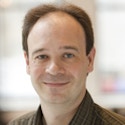
2013
Victor Galitski, Ph.D.
University of Maryland, Baltimore
Victor Galitski is a creative and productive scientist who at an early stage in his career has made many important contributions to diverse areas of quantum many-body physics, including applications of quantum theory to cold atomic gases, the theory of exotic spin models, topological insulators and topological superconductivity, quantum fluctuation phenomena, and the dynamics of periodically pumped systems. He is particularly known for his predictions of topological Kondo insulators (supported by recent experiments in samarium hexaboride), as well as his proposals for using multiple laser beams to realize spin-orbit physics in cold atomic gasses, which led to the discovery by Spielman and collaborators of the spin-orbit coupled Bose condensates he predicted.

Randall Kamien, Ph.D.
University of Pennsylvania
Randall Kamien is a leading figure in the theory of topological effects in condensed matter physics, known for the mathematical rigor he brings to his work and in particular for the use of sophisticated and elegant geometrical methods to obtain insight into fundamental aspects of the structure of polymers, colloids, liquid crystals and related materials and into the topological defects occurring in these materials.

Joel Moore, Ph.D.
University of California, Berkeley
Joel Moore is one of the leaders in the study of the topological aspects of electronic physics, particularly known for this work with Balents on strong topological insulators and his work with Orenstein and Vanderbilt on magnetoelectric couplings and optical responses induced by geometric and topological terms in various material classes. He has also obtained significant results on nonequilibrium dynamics of interacting quantum systems, significantly elucidating the role of quantum entanglement in these phenomena.

Dam Thanh Son, Ph.D.
University of Chicago
Dam Thanh Son’s work has deep impact across several subfields of physics. He has written important papers in quantum chromodynamics, theoretical nuclear physics, condensed matter physics and atomic physics. One of his many contributions concerns the duality between black holes in anti-de Sitter space and strongly interacting fluids. His initial work with Policastro and Starinets on the viscosity of the quark-gluon plasma opened new research directions in heavy ion physics and in string theory, and his subsequent work with Sachdev, Herzog and others established the AdS/CFT duality as a crucial theoretical tool of condensed matter physics. His recent work has helped the uncovering of a non-trivial connection between the quantum Hall effect, spin liquids and dualities in quantum field theories.
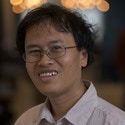
Senthil Todadri, Ph.D.
Massachusetts Institute of Technology
Senthil Todadri’s work with Fisher on Z2 topological order in models of spin liquid states provided key insights and initiated the systematic investigation of gauge structures in many-body systems, now a vital subfield of condensed matter physics. Senthil and co-workers also pioneered the theory of deconfined quantum criticality as a new paradigm for some phase transitions. Senthil and collaborators also introduced the concept of fractionalized Fermi liquids and developed a theory of continuous electronic Mott transitions. His most recent work in the theory of symmetry-protected topological phases and on combining ideas of quantum entanglement and many-body physics continues to move the boundaries of the field quantum many-body physics.
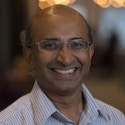
Xi Yin, Ph.D.
Harvard University
Xi Yin is one of the outstanding members of the new generation of theoretical physicists, known for his work on fundamental problems of quantum gravity, including new insights into black hole entropy, for his work with Giombi on higher spin gravity, and for helping to establish the Klebanov–Polyakov conjecture and extensions of the gauge/gravity dualities. He is also credited with important work on supersymmetric Chern–Simons theories and associated connections to M-theory.
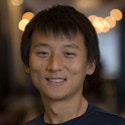
2012
Igor Aleiner, Ph.D.
Columbia University
Igor Aleiner is an influential leader of condensed matter theory research, renowned both for his fundamental contributions to our understanding of the quantum mechanical interplay of electron-electron interactions and disorder in condensed matter systems (in particular many-body localization) and for the theoretical power displayed in his tour de force calculations. He has used a variety of quantum field theoretic and random matrix methods to obtain profound results in the theory of quantum chaos, the study of mesoscopic fluctuation effects in interacting electron systems, the theory of transport in interacting disordered systems, and the properties of graphene.
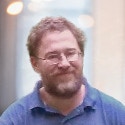
Michael Brenner, Ph.D.
Harvard University
Michael Brenner is a versatile theoretical physicist whose diverse contributions involve collaborations with biologists, physicists, and engineers from a variety of subfields. His work seamlessly integrates analytical and computational approaches to solve problems ranging from fundamental issues in fluid mechanics to engineering design to the evolution of protein functionality and from the aerodynamics of whale flippers to the ejection of fungal spores. He is known for generating creative and original questions and answers. Particularly noteworthy are his achievements in understanding the singularities and nonlinearities that control how droplets, jets and sheets of fluid change shape and break up. His work in this area has potential impact for optimizing devices ranging from inkjet printers to cell sorters. His research has also led to the development of general methods for simplifying the dynamical models of many coupled oscillators that arise in contexts such as atmospheric chemistry.
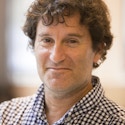
Sharon Glotzer, Ph.D.
University of Michigan
Sharon Glotzer is a leader in the use of computer simulations to understand how to manipulate matter at the nano- and meso-scales. Her work in the late 1990s demonstrating the nature and importance of spatially heterogeneous dynamics is regarded as a breakthrough. Her ambitious program of computational studies has revealed much about the organizing principles controlling the creation of predetermined structures from nanoscale building blocks, while her development of a conceptual framework for classifying particle shape and interaction anisotropy (patchiness) and their relation to the ultimate structures the particles form has had a major impact on the new field of “self-assembly’’. Glotzer recently showed that hard tetrahedra self-assemble into a quasicrystal exhibiting a remarkable twelve-fold symmetry with an unexpectedly rich structure of logs formed by stacks of twelve-member rings capped by pentagonal dipyramids.

Matthew Hastings, Ph.D.
Duke University
Matthew Hastings’ work combines physical insight and mathematical power to make profound contributions to a range of topics in physics and related fields. His Ph.D. thesis produced breakthrough insights into the multifractal nature of diffusion-limited aggregation, a problem that had stymied statistical physicists for more than a decade. Hastings’ recent work has focused on proving rigorous results on fundamental questions of quantum theory, including the stability of topological quantum order under local perturbations. His results on area laws and quantum entanglement and his proof of a remarkable extension of the Lieb-Schulz-Mattis theorem to dimensions greater than one have provided foundational mathematical insights into topological quantum computing and quantum mechanics more generally. Hastings resigned his Investigatorship in 2013 to move to Microsoft Research.
Chris Hirata, Ph.D.
California Institute of Technology
Chris Hirata is an outstanding young cosmologist and astrophysicist whose research ranges from purely theoretical investigations to original data analysis. He is known for his sophisticated analysis of radiative transfer through the epoch of reionization. He has also shown that primordial dark matter fluctuations can impact contemporary observations. His work with experimental and observational groups on systematizing the extraction of cosmological data from cross correlation of different extragalactic surveys is having an important impact on precision cosmology.
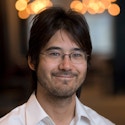
Charles Kane
University of Pennsylvania
Charles Kane and co-workers showed, extending earlier work by Thouless and collaborators, that the electronic band structures of all crystals could be classified in terms of the momentum space topology of the electronic states, and that as a consequence there exist protected states at interfaces between topologically nontrivial crystals and topologically trivial crystals. Along with related work by Shou-Cheng Zhang and others, Kane’s results have created a large and vibrant research field focused on the search for and measurement of topologically nontrivial materials, including materials that are topologically nontrivial as a result of broken symmetries. Kane’s recent work has turned towards applications for example the use of interfaces between topological insulators and ordinary superconductors to achieve a solid-state realization of Majorana fermions and the exploration of possible applications of these excitations in topological quantum computing.

Hirosi Ooguri, Ph.D.
California Institute of Technology
Hirosi Ooguri is a mathematical physicist and string theorist of exceptional creativity and breadth. His work on Calabi-Yau manifolds has yielded important new insights into the D-brane structures crucial to string theory, while his work on the relationship of supersymmetric gauge theories to string theory and to gravity has fostered the rapid development of the AdS/CFT correspondence, which relates quantum properties of gauge theories to solutions of higher-dimensional classical field equations in the presence of black holes and curved space-time. He is perhaps best known for his innovations in the use of topological string theory to compute Feynman diagrams in superstring models.
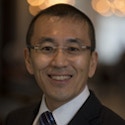
Frans Pretorius, Ph.D.
Princeton University
Frans Pretorius has made seminal contributions to the numerical solution of the equations of general relativity, in particular inventing a new computational scheme based on harmonic decomposition of the Ricci tensor, which is now a textbook method in the field. Thanks in large part to Pretorius’ innovations, accurate computer simulations of such general relativistic phenomena as the merger of two black holes have become possible for the first time after several decades of effort. These results enable the calculation of expected gravitational-wave signals that may be detected by present or planned gravitational wave observatories. Pretorius has also contributed to mathematical issues in general relativity such as the no-hair theorem in higher dimensions and the Gregory-Laflame instability of black strings.
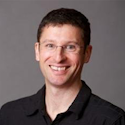
Eliot Quataert, Ph.D.
Princeton University
Eliot Quataert is an outstanding theoretical astrophysicist whose research combines many areas of physics, including gas dynamics, plasma physics, radiative transfer and nuclear physics. He is also known as a particularly effective mentor of students and postdocs. He has made fundamental contributions to the theory of astrophysical turbulence and transport properties in hot plasmas, as well as to stellar and black-hole astrophysics.
